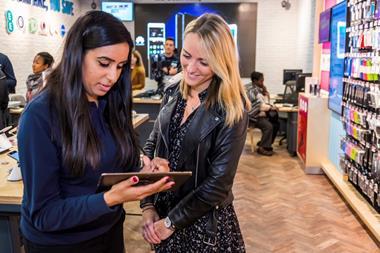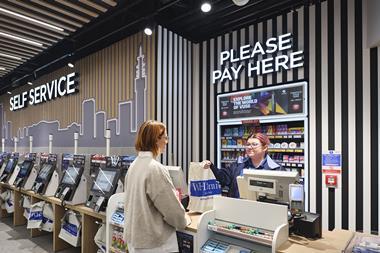PROMOTIONAL RESEARCH
With consumers feeling the pinch of ongoing political and economic uncertainty, measuring sentiment and understanding how they want to shop will be critical in 2018.
![Shutterstock 570834163 [converted]](https://d53bpfpeyyyn7.cloudfront.net/Pictures/480xany/7/9/7/3062797_shutterstock_570834163converted_794772.jpg)
Using exclusive consumer research based on 2,000 people, Retail Week – in association with Pure360, Oracle, Mastercard and Flixmedia – has asked what makes the 2018 consumer tick and identified four key steps to help guarantee a profitable customer-centric year.
Step 1: Understand the consumer mood
Political uncertainty, returning inflation, economic instability and rising interest rates are contributing to consumer anxiety.
Indeed, the political situation was found to be keeping the most people awake at night, with our survey revealing that 57% of consumers feel less confident about it in 2018, compared with 2017, while just 10% feel more confident.
The second most concerning factor is the general economy, which 51% feel less confident about in 2018, compared with the 13% who feel more certain.
Retailers are being urged to help customers by not only offering value for money and providing discounts and offers, but by lifting dampened spirits.
“As consumers we now shop in a culture of coupons, vouchers and special offers. However, [we] will also respond well to positive messages and anything that promises a brighter future,” says Joe Staton, head of market dynamics at GfK.
“Maybe now really is the time for a new ‘I’m backing Britain’ campaign to relaunch confidence in our homegrown produce and talent, and get us to open our hearts, minds and wallets.”
“Retailers are being urged to help customers by not only offering value for money and providing discounts and offers, but by lifting dampened spirits”
Step 2: Know how much they want to spend and on what
Although there has been plenty of media coverage about falling consumer spending, when we asked how much consumers expect to spend in 2018, compared with 2017, 45% of shoppers say more and just 21% less.
The prospect of higher consumer spending will be welcome news and in particular grocers can be optimistic because 43% of respondents plan to spend more on food in 2018, compared with 16% who plan to spend less.
“Grocery represents about 50% of retail sales and people need to eat,” says James Sawley, head of retail and leisure at HSBC’s UK corporate banking division.
“Food inflation has kept the numbers up despite Brexit uncertainty. More discretionary spending, such as clothing and furniture, has been hit harder.”
“When we asked how much consumers expect to spend in 2018, compared with 2017, 45% of shoppers say more and just 21% less”

Step 3: Know how they want to shop
When asked where they are most likely to shop, the highest number of our survey respondents (31%) say in store.
However, the steady growth of ecommerce looks set to continue, with 31% of shoppers expecting to spend more online in 2018, compared with 20% who expect to spend less.
When it comes to ecommerce Staton says shoppers expect to transition seamlessly from device to device, whether at home or on the go.
“Retailers must ensure any transaction is frictionless, personalised and fast, irrespective of channel or location,” he says. “Why prioritise one gadget over another when consumers expect and demand a seamless and similar experience however and wherever they choose to shop?”
Step 4: Look ahead to the key trends of 2018
Today’s retailers should not only operate with transparency but also demonstrate that they care about what matters to shoppers.
When asked what guides their decision to purchase, 15% of respondents say sustainability – knowing that products are made in an ethical and sustainable way – and 9% say provenance and knowing where products are made.
“When asked what guides their decision to purchase, 15% of respondents say sustainability”
It’s a topical issue, with the BBC’s Blue Planet II having recently highlighted the damage caused by wasted plastics. Co-op and Iceland are two retailers that have already signed up to a plastic bottle deposit scheme.
Leading and educating on sustainable products and ingredients is just one of the trends that will appeal to the consumer in 2018.
Implementing these four steps will be crucial for retailers over the coming 12 months.


























No comments yet